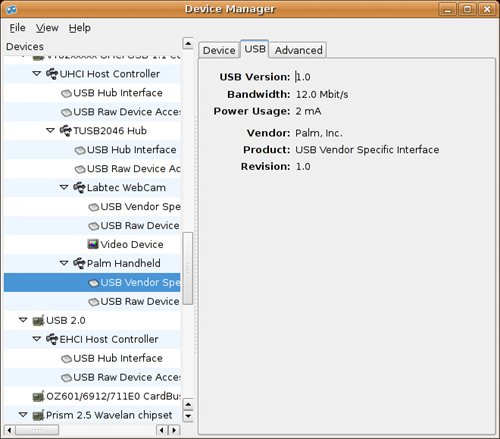Getting Familiar with Your Other Hardware
| Meeting new people isn't always easy. Sociologists tell us that there is a complex interplay that takes place whenever we meet someone new, much of it subconscious. Although it is possible to meet someone and instantly like him or her, it is more likely that you become comfortable enough to develop a friendship only after having been around a person for some timein other words, after you've gotten to know a person better. Now, what the heck does this have to do with hardware and your Linux system? Well, it's like this . . . . For most, the computer we use is a black (or beige) box with a few things plugged into it and some magic happening inside that makes it possible to surf the Internet. Anything that falls outside the small subset of applications we use makes us uneasy. That's why the notion of trying something new may be intimidating. The best way to get over that is to become comfortable with what you have. Ubuntu's Device Manager is a great place to start for getting to know what makes up your system (see Figure 6-10). You can find it by clicking the System menu on the top panel and selecting Device Manager from the Administration submenu. Or, you can bring it up by pressing <Alt+F2> and typing in hal-device-manager, its program name. Figure 6-10. GNOME's Hal Device Manager. As soon as the Hal Device Manager loads up, you'll notice that the program window is broken into two main panes. The left side lists all the various device classes and subclasses that make up your system. Beside each major item, there's a small arrow that collapses or expands that particular device or device class' components. Click any item and details about that item are displayed in the right pane. Why don't we take a few minutes to explore this hardware landscape? Let's start with PCI devices. PCI DevicesAdding a PCI device definitely requires a reboot because we are talking about internal devices, though your system likely has PCI devices already installed. These are cards that fit into the slots inside your computer. When you reboot the machine, Linux should be able to scan for these cards and identify them without any problem. When you click a PCI device, you'll see that a third tab appears in the right pane. Click the tab to get more vendor-specific information on the device (see Figure 6-11). This is particularly useful if there is a configuration issue and you need to identify your device's make and model number. Figure 6-11. When listing PCI devices, the Device Manager adds a PCI information tab in the right pane. Shell Out
If the Linux kernel has the appropriate device drivers available as modules, they are automatically loaded, and nothing else needs to be done to make the device available. The reason that this information is useful has to do with those times when you do not have a driver handy or directly available. Being able to get the details on the troublesome device in this way is the first step toward getting it working. A classic example of this is the Winmodem, so called because it was designed to work specifically with Windows. If you have one of these modems and it was not automatically configured by the system, never fear. I'll talk about Winmodems in more detail later in the chapter. For the moment, let's talk USB. USB DevicesThe whole idea behind USB was eventually to replace all those different connectors on the back of a computer. That includes serial ports, parallel ports, and mouse and keyboard connectors. The acronym stands for Universal Serial Bus. On any USB system, there is at least one USB hub and whatever devices are attached. If you look at Figure 6-12, you can see information displayed on two USB controllers (one is a USB 2.0 port, the other USB 1.1), a Labtec webcam, a mini USB wheel mouse, and my Palm Zire 72 (selected), all connected to my system. Figure 6-12. The Hal Device Manager displaying USB information on a connected Palm device. Notice that in the case of a USB device, like my Palm Zire 72, a third tab appears on the right pane. It is labeled USB and clicking it displays additional information specific to the USB device currently selected. Trivia Time
Shell Out
The sheer number of USB devices available is phenomenal, to say the least, and the list is growing. Many of these devices use a standard set of drivers, which means that a number of things can literally be plugged in and usedno need to mess with loading drivers because it is all being done for you. You noticed the word many in that last sentence, right? Keeping track of what works (and what doesn't) and providing access to drivers that aren't included in current distributions is the raison d'être of the Linux USB Device Overview Web site. If you find yourself looking at a new webcam, and you aren't sure whether it is supported under Linux, look there first: http://www.qbik.ch/usb/devices/ The site is organized into sections, depending on the device type (audio, video, mass storage, and so on). Each device is assigned a status identifying just how well a device is supported, from works perfectly to works somewhat to don't bother. |
EAN: 2147483647
Pages: 201
- Key #4: Base Decisions on Data and Facts
- Beyond the Basics: The Five Laws of Lean Six Sigma
- Making Improvements That Last: An Illustrated Guide to DMAIC and the Lean Six Sigma Toolkit
- The Experience of Making Improvements: What Its Like to Work on Lean Six Sigma Projects
- Six Things Managers Must Do: How to Support Lean Six Sigma